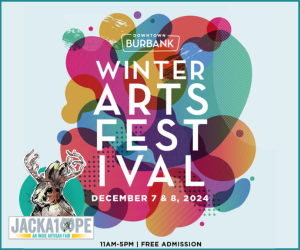In the coming weeks you may begin hearing more about the the final supermoon of the year, which promises to be spectacular not only because the moon will be at its closest proximity to earth for all of 2015, but also because it happens to coincide with a total lunar eclipse.
That said, if you happen to live in Los Angeles, here are a few things you’ll want to know if you plan to gaze up at the sky on the night of September 27 and enjoy this heavenly display.
1. What’s a Supermoon?
According to earthsky.org, the term “supermoon” was first coined by an astrologer, Richard Nolle, over 30 years ago. However, it is only since about 2011 that the word has become part of popular nomenclature.
Because of the oval shaped orbit of the moon, the distance between us and our moon varies on any given night. A perigee moon occurs when a full moon is simultaneously in its closest proximity to the earth, and a supermoon fits into a little bit broader category, encompassing any full moons that occur within 90% of their closest proximity to the earth. When the moon is in perigee, it’s up to 14% bigger and brighter than normal. Basically, it looks friggin’ awesome.
What’s especially interesting about this September’s supermoon is that it’s also a lunar eclipse (sometimes called a blood moon), which is a pretty are combination.
I’ll let NASA explain:
2. When is the best time to see the Supermoon / Lunar Eclipse?
According to timeanddate.com the lunar eclipse is scheduled to begin in our Pacific coastal region on Sunday, Sep 27, 2015 at 5:11pm. The sun will set at 6:43 pm, with the total eclipse beginning at 7:11pm. Peak time to observe the eclipse will be at 7:47pm, and will end around 9:27pm.
So that’s your best window. Plan accordingly.
3. Where should I watch the Supermoon in Los Angeles?
You’ll want to grab a vantage point that has objects / scenery in the foreground to juxtapose against the moon in the backdrop (buildings, trees, etc…). This is kind of a perspective trick in our minds, but the juxtaposition will make the moon seem even bigger and brighter.
Some places I’ve heard might be good spots to see the moon include: Upper Las Virgenes Canyon Open Space Preserve, Griffith Observatory, and Franklin Canyon Park in Beverly Hills. If you have other ideas, feel free to leave them in the comments below.
[UPDATE: From 6:30 to 9:45 p.m., pianist Ray Ushikubo will be playing Beethoven sonatas as part of the L.A. Philharmonic’s “Immortal Beethoven” program at the Griffith Observatory as part of their public star party to celebrate the Supermoon, which starts at 2:00pm]
If you don’t want to head to a vantage point or are stuck in an office that night, you can likely watch a live stream via slooh.com or on NASA’s website (no scheduled stream links up yet, but I’m guessing there will be).
4. When will the next Supermoon take place?
Supermoons in of themselves are fairly common (we get 4-6 a year), but we won’t see another supermoon / lunar eclipse combo until the year 2033.
So enjoy it while it’s here!

